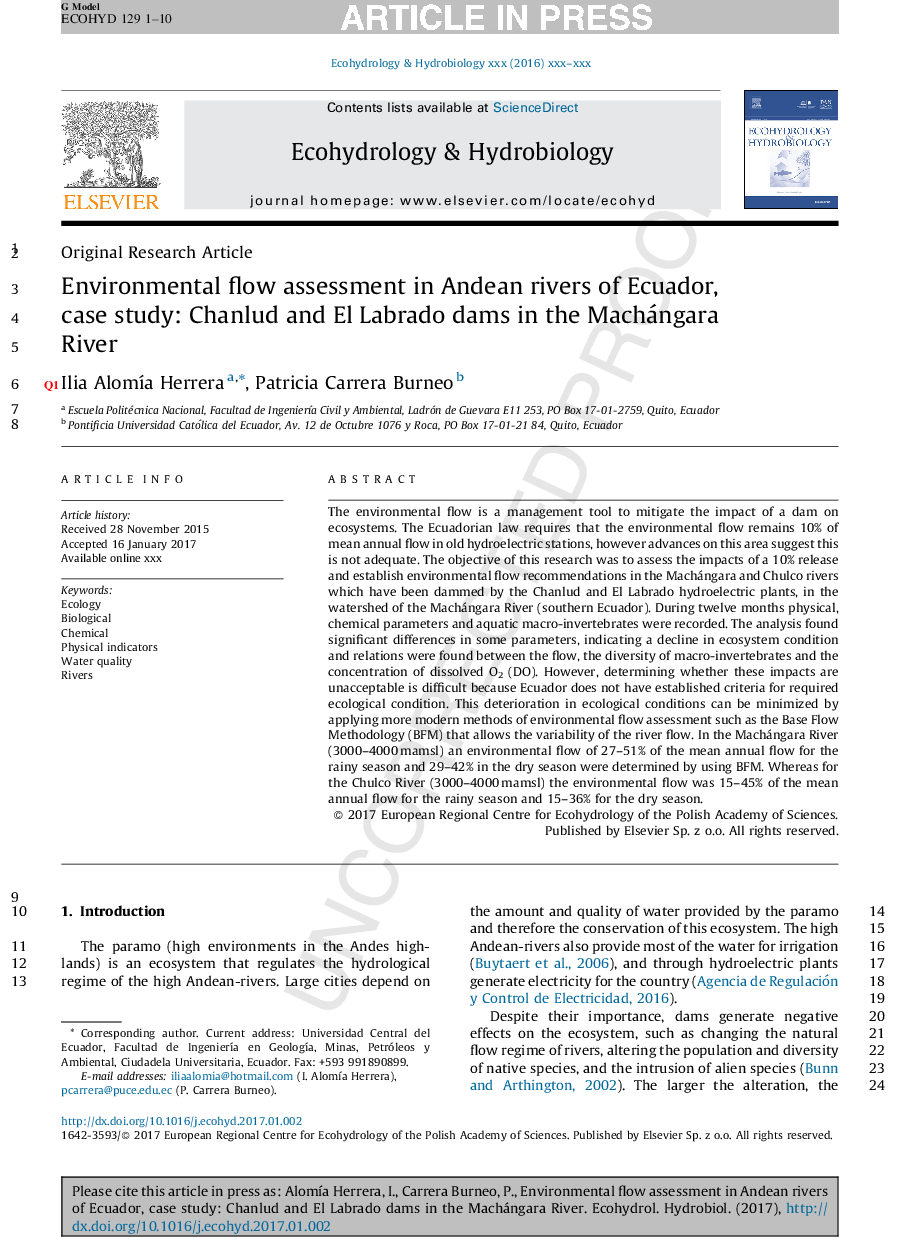| Article ID | Journal | Published Year | Pages | File Type |
|---|---|---|---|---|
| 5743462 | Ecohydrology & Hydrobiology | 2017 | 10 Pages |
Abstract
The environmental flow is a management tool to mitigate the impact of a dam on ecosystems. The Ecuadorian law requires that the environmental flow remains 10% of mean annual flow in old hydroelectric stations, however advances on this area suggest this is not adequate. The objective of this research was to assess the impacts of a 10% release and establish environmental flow recommendations in the Machángara and Chulco rivers which have been dammed by the Chanlud and El Labrado hydroelectric plants, in the watershed of the Machángara River (southern Ecuador). During twelve months physical and chemical parameters, and aquatic macro-invertebrates were recorded. The analysis found significant differences in some parameters, indicating a decline in ecosystem condition and relations were found between the flow, the diversity of macro-invertebrates and the concentration of dissolved O2 (DO). However, determining whether these impacts are unacceptable is difficult because Ecuador does not have established criteria for required ecological condition. This deterioration in ecological conditions can be minimized by applying more modern methods of environmental flow assessment such as the basic flow methodology (BFM) that allows the variability of the river flow. In the Machángara River (3000-4000 m a.s.l.) an environmental flow of 27-51% of the mean annual flow for the rainy season and 29-42% in the dry season were determined by using BFM. Whereas for the Chulco River (3000-4000 m a.s.l.) the environmental flow was 15-45% of the mean annual flow for the rainy season and 15-36% for the dry season.
Related Topics
Life Sciences
Agricultural and Biological Sciences
Agricultural and Biological Sciences (General)
Authors
Ilia AlomÃa Herrera, Patricia Carrera Burneo,
